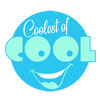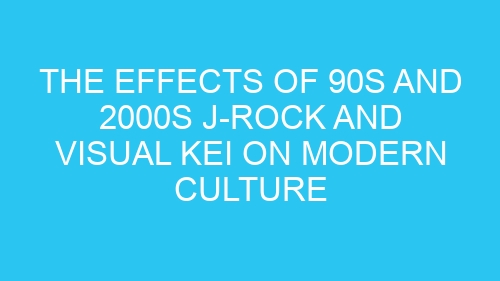-
Table of Contents
Influence of 90s and 2000s J-Rock and Visual Kei Fashion Trends
The 90s and 2000s were a golden era for J-Rock and Visual Kei music, with bands like X Japan, L’Arc-en-Ciel, and Dir en Grey taking the world by storm. But it wasn’t just the music that made waves – the fashion trends of these eras also left a lasting impact on modern culture.
One of the most iconic fashion trends from the 90s and 2000s J-Rock and Visual Kei scene was the use of elaborate and flamboyant costumes. Bands like Malice Mizer and Versailles were known for their extravagant outfits, which often featured lace, leather, and lots of accessories. These over-the-top looks have influenced modern fashion in a big way, with designers like Alexander McQueen and Vivienne Westwood drawing inspiration from the bold and daring styles of J-Rock and Visual Kei.
Another key trend from this era was the use of androgynous fashion. Many J-Rock and Visual Kei musicians blurred the lines between masculine and feminine, wearing makeup, skirts, and other traditionally feminine clothing items. This gender-bending style has become more mainstream in recent years, with celebrities like Harry Styles and Jaden Smith embracing a more fluid approach to fashion. The influence of J-Rock and Visual Kei can be seen in the rise of gender-neutral clothing lines and the increasing acceptance of non-binary fashion choices.
The use of bright colors and bold patterns was also a hallmark of 90s and 2000s J-Rock and Visual Kei fashion. Bands like Gazette and An Cafe were known for their eye-catching outfits, which often featured neon colors, animal prints, and unconventional accessories. This playful and eccentric style has made a comeback in recent years, with designers like Jeremy Scott and Moschino embracing a more whimsical approach to fashion. The influence of J-Rock and Visual Kei can be seen in the resurgence of 90s-inspired trends like platform shoes, chokers, and crop tops.
One of the most enduring legacies of 90s and 2000s J-Rock and Visual Kei fashion is the emphasis on individuality and self-expression. Musicians from this era were unafraid to push boundaries and break the rules when it came to their personal style, inspiring a whole generation of fans to do the same. This spirit of rebellion and creativity can be seen in the rise of street fashion movements like Harajuku and the continued popularity of DIY and upcycled clothing. The influence of J-Rock and Visual Kei can be seen in the growing trend of customizing and personalizing clothing items to reflect one’s unique personality and interests.
In conclusion, the fashion trends of 90s and 2000s J-Rock and Visual Kei have had a lasting impact on modern culture. From androgynous styles to bold colors and patterns, the influence of these eras can be seen in the way we dress and express ourselves today. So next time you’re putting together an outfit, why not take a cue from your favorite J-Rock or Visual Kei band and embrace your inner rock star? Who knows, you might just start a fashion revolution of your own.
Impact of J-Rock and Visual Kei Music on Contemporary Music
The 90s and 2000s were a golden era for J-Rock and Visual Kei music, with bands like L’Arc-en-Ciel, X Japan, and Dir en Grey taking the world by storm. Their unique blend of rock, pop, and visual aesthetics captivated audiences not only in Japan but also around the globe. Fast forward to today, and the influence of these iconic bands can still be felt in modern culture, particularly in the realm of contemporary music.
One of the most significant impacts of 90s and 2000s J-Rock and Visual Kei on modern music is the fusion of different genres and styles. These bands were known for pushing boundaries and experimenting with various musical elements, creating a sound that was both innovative and captivating. Today, we see artists from all over the world incorporating elements of J-Rock and Visual Kei into their music, resulting in a diverse and eclectic musical landscape.
Furthermore, the visual aspect of J-Rock and Visual Kei has also left a lasting impression on modern culture. The elaborate costumes, dramatic makeup, and theatrical performances of bands from this era have inspired a new generation of artists to embrace their creativity and express themselves through their appearance. From Lady Gaga to BTS, we see artists today who are unafraid to push the boundaries of fashion and style, much like their J-Rock and Visual Kei predecessors.
In addition to influencing the sound and style of modern music, 90s and 2000s J-Rock and Visual Kei have also had a significant impact on the way music is consumed and shared. With the rise of social media and streaming platforms, fans now have more access to their favorite artists than ever before. This has allowed J-Rock and Visual Kei bands to reach a wider audience and connect with fans on a more personal level, creating a sense of community and camaraderie that transcends borders.
Moreover, the DIY ethos of many J-Rock and Visual Kei bands from the 90s and 2000s has inspired a new wave of independent artists who are taking control of their own careers and creating music on their own terms. From self-producing albums to organizing their own tours, these artists are following in the footsteps of their J-Rock and Visual Kei predecessors, proving that you don’t need a major record label to make an impact in the music industry.
Overall, the effects of 90s and 2000s J-Rock and Visual Kei on modern culture are undeniable. From influencing the sound and style of contemporary music to changing the way music is consumed and shared, these iconic bands have left a lasting legacy that continues to shape the music industry today. So next time you’re listening to your favorite J-Rock or Visual Kei band, remember the impact they have had on modern culture and the artists who continue to be inspired by their groundbreaking work.
Evolution of J-Rock and Visual Kei Aesthetics in Modern Pop Culture
The 90s and 2000s were a golden era for J-Rock and Visual Kei music in Japan. Bands like X Japan, L’Arc-en-Ciel, and Dir en Grey were taking the world by storm with their unique blend of rock, metal, and punk influences. But what many people don’t realize is that the impact of these bands goes far beyond just the music itself. The aesthetics and fashion of J-Rock and Visual Kei from this time period have had a lasting influence on modern pop culture.
One of the most iconic aspects of J-Rock and Visual Kei from the 90s and 2000s is the flamboyant and over-the-top fashion. From elaborate hairstyles to dramatic makeup and extravagant costumes, these bands were not afraid to push the boundaries of what was considered “normal” in terms of style. And this boldness has definitely left its mark on modern fashion trends.
Take a look at any music video or live performance by a K-pop group today, and you’ll see echoes of the Visual Kei aesthetic. The colorful hair, the edgy makeup, the elaborate costumes – it’s all there, paying homage to the pioneers of J-Rock and Visual Kei from decades past. And it’s not just limited to music either. Fashion designers around the world have been inspired by the boldness and creativity of these Japanese rock bands, incorporating elements of their style into their own collections.
But it’s not just the fashion that has been influenced by J-Rock and Visual Kei from the 90s and 2000s. The music itself has also had a lasting impact on modern pop culture. Bands like X Japan and L’Arc-en-Ciel were known for their high-energy performances and catchy melodies, and these qualities can be seen in the music of many contemporary artists.
The theatricality and showmanship of J-Rock and Visual Kei have become staples of modern pop music. Artists like Lady Gaga and BTS have taken cues from these Japanese rock bands, incorporating elements of their stage presence and performance style into their own shows. The result is a spectacle that is both visually stunning and musically captivating, drawing in audiences from around the world.
And let’s not forget about the impact of J-Rock and Visual Kei on anime and manga. Many of the bands from the 90s and 2000s provided theme songs for popular anime series, introducing their music to a whole new audience. And in turn, the anime and manga that featured these bands helped to spread the Visual Kei aesthetic to fans around the world.
In conclusion, the effects of 90s and 2000s J-Rock and Visual Kei on modern culture are undeniable. From fashion to music to anime, the influence of these Japanese rock bands can be seen and heard everywhere. So the next time you see a K-pop group with colorful hair and dramatic makeup, or hear a catchy pop song with a rock edge, remember where it all began – with the pioneers of J-Rock and Visual Kei from decades past.

